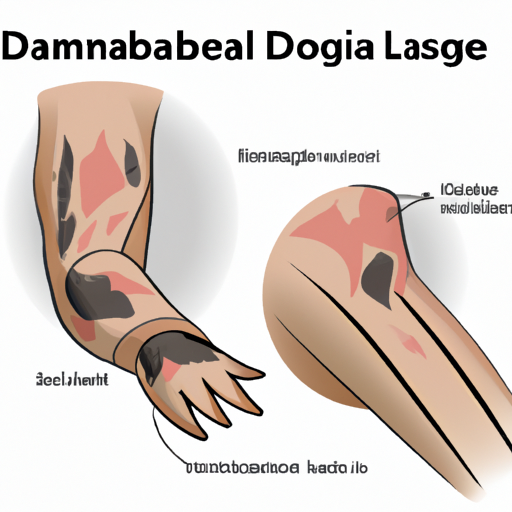Elbow dysplasia in dogs is a common condition, particularly in larger breeds. By understanding its signs, symptoms, and potential treatments, you, as a caregiver, can ensure your furry friend enjoys the highest possible quality of life.
1. Understanding Elbow Dysplasia
Elbow dysplasia is a painful, debilitating condition that affects a dog’s elbow joint. It’s essentially an abnormal development or growth of the elbow, which leads to a series of complications, including degenerative joint disease.
Most commonly, elbow dysplasia is seen in large and giant breeds, such as Labrador Retrievers, Golden Retrievers, and German Shepherds. However, it can affect dogs of any size.
2. Identifying The Signs of Elbow Dysplasia
Recognizing the signs of elbow dysplasia is essential for early intervention. Here are some symptoms you might notice:
- Limping or Lameness: This could be intermittent or constant.
- Pain When Extending or Flexing the Elbow: Your dog might show signs of discomfort when the joint is moved.
- Swelling Around the Elbow: This can be a sign of inflammation in the joint.
- Stiffness After Resting: After a period of rest, your dog might appear stiff or awkward when moving.
3. How is Elbow Dysplasia Diagnosed?
Elbow dysplasia is diagnosed through a combination of clinical examinations, X-rays, and potentially further diagnostic tests such as CT scans or arthroscopy.
| Diagnostic Method | Description |
|---|---|
| Clinical Examination | The vet will observe your dog’s gait and may manipulate the elbow joint to check for pain or reduced mobility. |
| X-rays | X-rays can reveal changes in the structure of the elbow joint that are indicative of dysplasia. |
| CT scans or Arthroscopy | These provide a more detailed view of the joint and can help in determining the severity of the condition. |
4. Treatment Options for Elbow Dysplasia
Treatment of elbow dysplasia depends on several factors such as the age of the dog, the severity of the dysplasia, and the dog’s overall health. Here are some possible treatment options:
- Non-Surgical Treatment: This includes pain management, weight control, and physical therapy.
- Surgical Treatment: Various surgical options are available, depending on the specific type of elbow dysplasia your dog has.
5. Managing Elbow Dysplasia at Home
As a caregiver, there are several things you can do at home to help manage your dog’s elbow dysplasia:
- Maintain a healthy weight for your dog.
- Provide a balanced diet enriched with joint supplements.
- Regular, gentle exercise is beneficial.
- Use orthopedic dog beds for comfort and support.
Frequently Asked Questions
Q: What causes elbow dysplasia in dogs?
A: It’s often a genetic condition, though environmental factors can contribute.
Q: Can elbow dysplasia be cured?
A: While it can’t be cured, it can be managed with treatments and lifestyle adjustments.
Q: How can I prevent elbow dysplasia in my dog?
A: Since it’s often genetic, prevention isn’t always possible. However, maintaining a healthy weight and regular vet check-ups can help.
Q: Is elbow dysplasia painful for my dog?
A: Yes, it can cause significant discomfort and pain. Pain management is a crucial part of treatment.



